Motivation
35 mm lenses are considered as classical full frame lenses. Many people say that 35, 50 & 85mm are "the" lenses of a photographer. And in times where people have the choice between APS-C and Fullformat the 35 mm gets 52,5 or 56mm depending on the camera manufacturer.
I do love the 35mm range. I have that range in different ways since a long time in my portfolio:
- Canon EF 35mm f 2.0 IS USM
- Leica 15mm f 2.0 for µ43
- Canon EF-M 22mm f 2.0
All these lenses I like very much. the last two are pretty little, they became my always on always with me lenses.
The reason why I shoot fast prime lenses - you might have seen it in my blog - is bokeh - otherwise we all could go with our iPhones....
 170804_5D4_0026.jpg
170804_5D4_0026.jpg
The Canon EF 35mm f 2.0 IS USM is a very nice lens I like it very much. But to be honest: the f1.4 mkII has blown me away. The amount of bokeh is just stunning. Especially on the EOS M5!. It is a real game changer in terms of image it delivers.
Therefore I was really happy to hear that Zeiss has developed a new high class design Milvus 35mm f 1.4 which I got for a 2 weeks for testing.
From the systematics: I first will talk about build quality, than about real world shooting experience (which has to do with the bodies as well) and than the comparison of image quality and bokeh rendering...
 170802_5D4_1032.jpg
170802_5D4_1032.jpg
Luckily I was able to take the Milvus -as well as the other 2 35mm lenses on a boat trip to Denmark... So I think I do have some nice photos as well for this review... The lenses where around me in the boat - and they experienced some water as well
Build Quality and Usage
There is a big difference in build quality between the lenses. To say "you get what you pay for" is a bit to simple. The difference between these 3 lenses is much to high. But this is the case because of the Zeiss Milvus. First indicator is the weight. 507 vs 870 vs 1100 g.. And the size: the Milvus is really hefty! In size and weight. It is even longer than the 85mm f1.4 - which is a bit wider (filter ø 77mm vs 72mm).
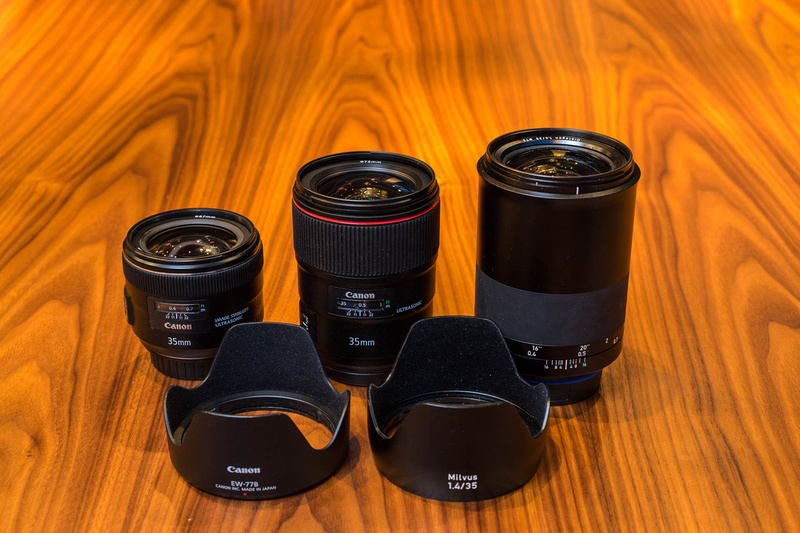 170804_5D4_0027.jpg
170804_5D4_0027.jpg
It is maybe astonishing to say but in terms the quality you feel the 2 Canon lenses are pretty close. Both are out of "engineered plastic" with metal mounts. The plastic feels and sounds pretty much the same between these two. There is an advantage of the L-Lens because it claims dust & weather sealing. So a little edge to the L-glass in this matter. But the EF 35mm f2.0 USM has an USP as well: it is the IS which allows you to use the lens in low light with pretty long exposure times. But this is only one part of the story where the weight comes into the picture. The Milvus on the other sight is heavy. And this heaviness stabilizes the system and makes it easier to shoot longer exposure times as well....
But build quality is one of the topics which gives a advantage to the Milvus Series. Since I do own 3 Milvus lenses it is just exciting how well they are build. Like tanks. Pure metal and glass. Here you get value for money which you feel whenever you hold a Milvus Lens in your hand. And I do love this feeling of quality....
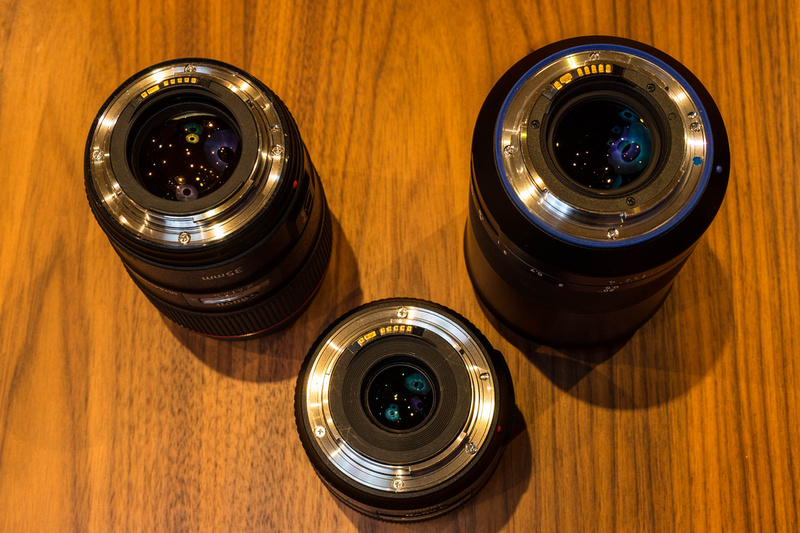 170804_5D4_0036.jpg
170804_5D4_0036.jpg
Another topic is focusing. here is a big difference: the Canon lenses have autofocus, the Zeiss is manual focus only. A clear advantage for the Canons? At the first glance it looks so, in terms of speed and ease of use: definitely. But there are other points to consider. There are shootings where you have time, for instance for studio photography and landscape. There autofocus is not an advantage but also no disadvantage. It is the level of concentration manual focusing demands. This is a more focused way of shooting. I feel that I am more concentrated on point of view, what I want to have in focus and a proper framing. This is a clear advantage of manual focus.
Technically the Milvus Lenses are engineered for manual focusing. While Canon offers typically 120º of focus throw - the Milvus f1.4 lenses are offering impressive 270º of focus throw, and this purely mechanical. What a feeling...
But let me say something: the new f1.4 lenses are huge - and heavy on a small camera like the EOS M5 it looks a bit front heavy - and it is. But with the Milvus well, thats really hefty...
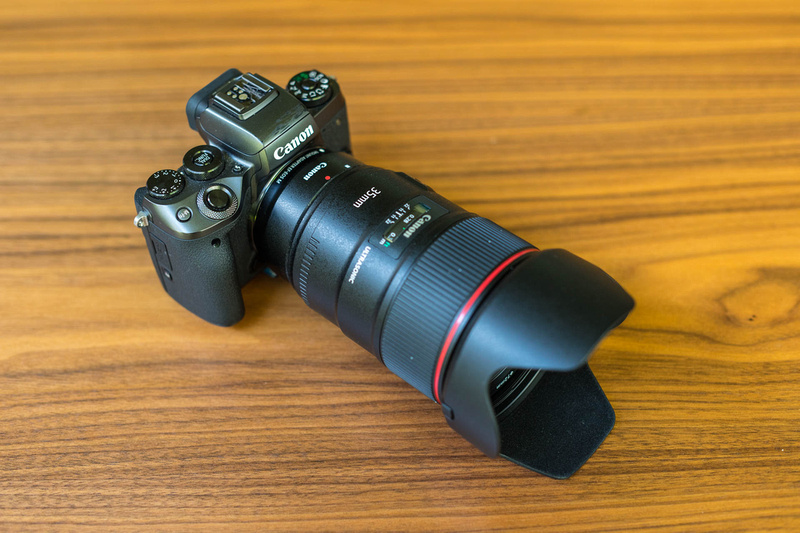 170604_5D4_0226.jpg
170604_5D4_0226.jpg
Image Quality
At the end, image quality is the main topic. In this section I have to do pixel peeping, but more than that. After the comparison of the Milvus f1.4/50mm with the Nifty Fifty other aspects are coming into the picture as well.
One Remark: The brand-new Milvus was a pre-series version before the official sales start. Therefore the EXIF´s did not show up with the right name, the lens name was just "35mm". And -a shame for Canon!!!- at the M5 it shows up as -mm. But the M5 ignores all non Canon lens names...
And I did not look for chromatic aberrations... simply because they are not that easy to get with these lenses....
Sharpness and Vignetting
Everybody is demanding sharpness. So let´s start with that... Sharpness is something which everybody wants to have. But in case of these lenses: they are sharp, all three. Basically. In the center: all three are great, in the extreme: from f2.8 - latest f 4 all are redicously sharp....
And with f 1.4... So the most challenging thing for lenses....
 Screenshot
Screenshot
What you easily see: Vignetting. This is more pronounced at the Canon L but it can be corrected in post processing.
 Screenshot
Screenshot
Left corner
 Screenshot
Screenshot
Here you see the right corner of the images. It is very hard to name remarkable differences in terms of sharpness.
It is amazing to see how sharp are both lens - even in the extrem corners.
But how does this look @ f2.0.
 Screenshot
Screenshot
ok... the f2.0 IS is wide open - it shows some vignetting - the´s impressive...
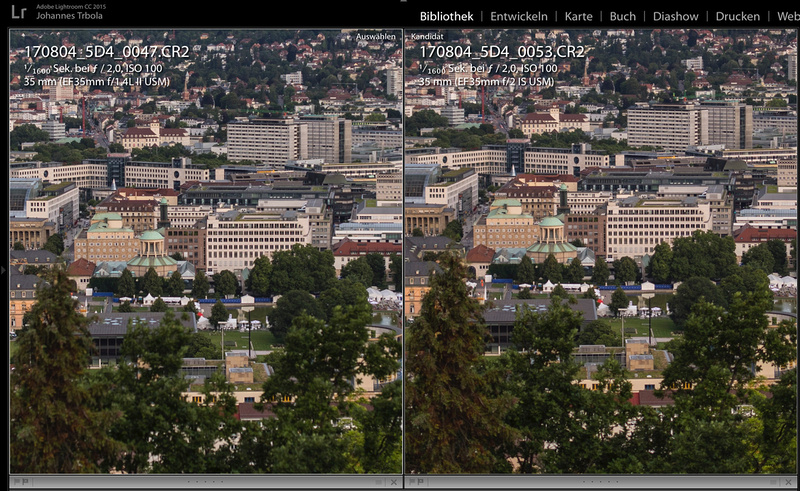 Screenshot
Screenshot
Center sharpness: it is just great... with all lenses. Here is the comparison between the two Canons...
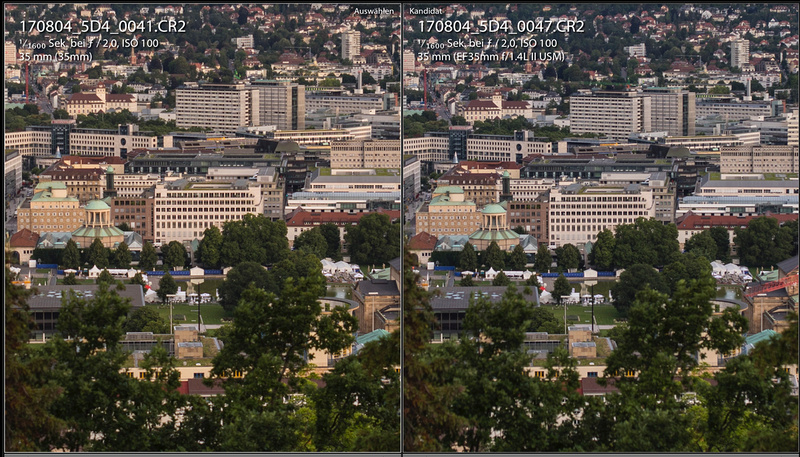 Screenshot
Screenshot
Here its the center again, but in this case the Milvus vs the Canon L-Lens. What´s shows up again is the vividness of the Milvus...
 Screenshot
Screenshot
This is the right corner, again Milvus left and Canon L on the right.
 Screenshot
Screenshot
This time I compared the Milvus with the Canon f2.0 IS... yes, the cheaper lens is softer but it is much less pronounced as with the Canon 50mm lenses.
 Screenshot
Screenshot
Now the left side of the image. Again the Milvus on the left and the L-Lens on the right. And obviously the left image is a bit softer...
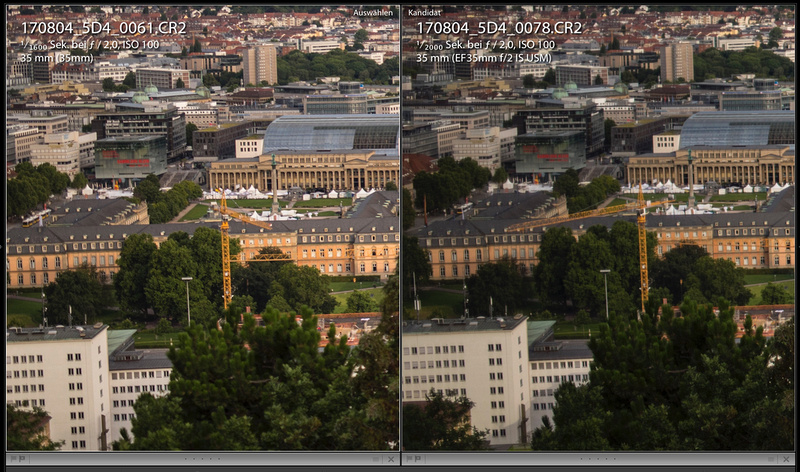 Screenshot
Screenshot
Here the comparison between the Milvus and the f2.0 IS from Canon, marginal softer but interestingly the color saturation of the Canon is stronger - maybe due to vignetting....
 Screenshot
Screenshot
The images above shows the situation @ f 2.8. On both f1.4 lenses the vignetting disappeared. Since the sharpness is there from edge to edge it did not make sense to me to show you boring images....
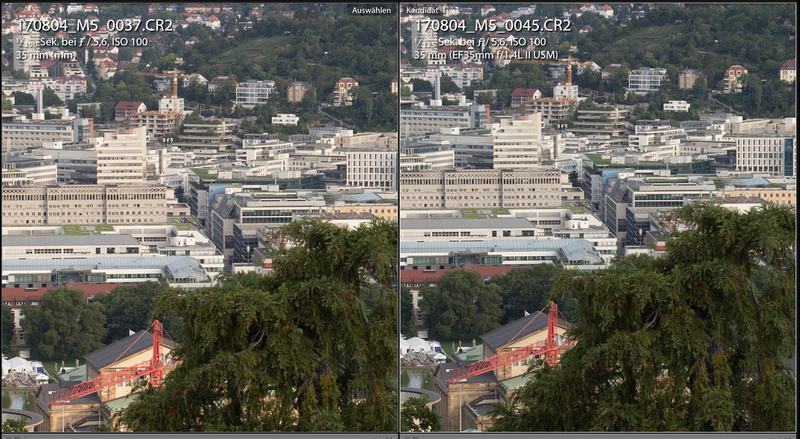 Screenshot
Screenshot
What I found interesting to look at the EOS M5 - in this case at f5.6. The idea was: do you see any difference between the expensive lenses to the cheaper one. The M5 with its 24 megapixel sensor represents the pixel pitch of 48 megapixel in full frame. And there is no reason to believe that the "pro-grade" lenses will shine at 50 MP as well....
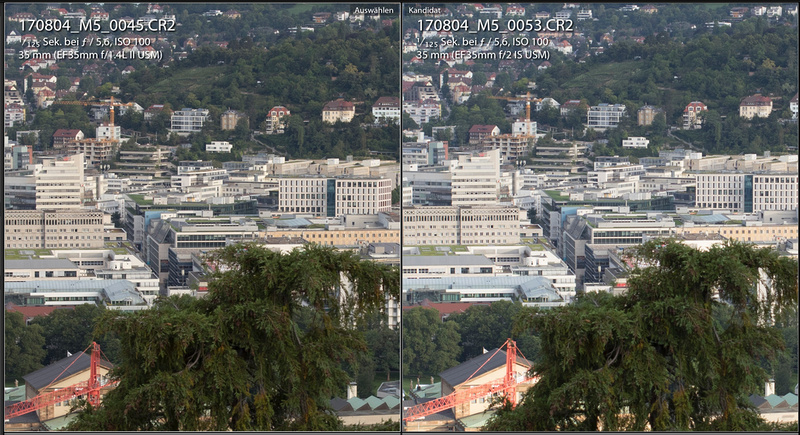 Screenshot
Screenshot
Maybe the f2.0 IS will be not that good at this resolution but absolutely great....
Lens Flare
 Screenshot
Screenshot
Above you see from left to right the IS f2.0, than the L-glass and on the right the Milvus.
All three - again are performing well. The 6 elements are not that pleasant in comparison with the higher element numbers on both the L and the Milvus. ... And the Milvus shows higher contrast due to my taste....
Bokeh Quality
For testing the bokeh quality I have chosen 2 setups.
1. on our garden table. Here I put some candles into the picture to produce bright bokeh balls and some flowers in the background to evaluate the creaminess in the background areas...
2. Here I -originally- wanted to have a blue hour model shoot. But unfortunately all models I have asked were not available so I have chosen a piece of art. The idea was to have the lights of the city totally blurred bringing large bokeh balls - and a bright object in the foreground....
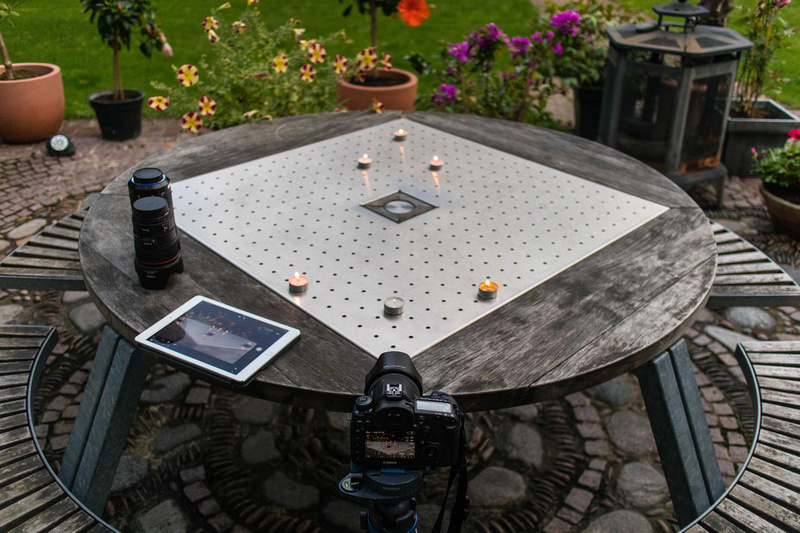 170804_M5_0016.jpg
170804_M5_0016.jpg
The set up of the first bokeh test. The 5D Mk IV was taking the images, mounted on a sturdy tripod. the iPad was used to check focusing and to release the shot. this works perfect - with both cameras I used - the 5D Mk IV as well as the EOS M5.
 Screenshot
Screenshot
Here you see from left to right Milvus - L - IS... First of all: this is a bit tricky to evaluate The Idea was to show the closest area which is sharp. The right set up for this test has the difficulty that the reference is the sensor plane. In reality the lenses have a different length which means that the viewing angle will be different, too. As a comparison: normally the bokeh balls should be a factor of 1.4 smaller at the f 2.0 lens in comparison to f 1.4 - but this is nearly the case...
 Screenshot
Screenshot
In this case i used the candle als reference point for focusing.
 Screenshot
Screenshot
In this image the left candle was the reference for focusing. I made a crop into the image to look ar the difference in the bokeh.
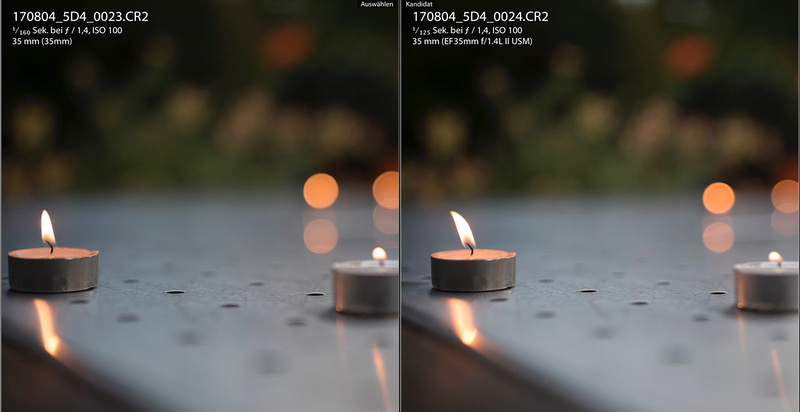 Screenshot
Screenshot
Yes there is something... as seen with the Milvus 1.4/50mm the bokeh is softer again. The Canon bokeh is nice and soft as well - but a margin more busy - not that pleasant I have to say....
For the 2nd shot I wanted to do it with a model, using the light of the city as background..
 170804_5D4_0038.jpg
170804_5D4_0038.jpg
Here you see the basic setup of the photos below. he EOS M5 is mounted on a tripod, I used off camera flash with the RT Radio controller and the Canon EX 430 RT as well as the beauty dish from Roundflash.
 Screenshot
Screenshot
This images are shot with the M5, the lenses are wide open (f1.4 or f2.0) . What has blown me away: the vividness of the Milvus. straight out of camera..... Left: IS, middle: Milvus, right: The-L-glass.
 Screenshot
Screenshot
 Screenshot
Screenshot
Maybe the only downside of the Milvus: the onion style bokeh balls. These are mote pronounced
Shooting Experience
A couple of things to say. Using 35 mm as more or less standard lens whenever I carry the "big guys" with me (5D Mk IV, 7D MkII) i found out that especially the EF-L holds the records in "keepers". The last wedding: All photos I published on Facebook were shot with the EOS M5 & EF-L 35mm f1.4 II combo. This was really astonishing for me - but the images were awesome, too...
Therefore testing the Milvus 1.4/35mm was nearly a must. The expectations were high. And they were not disappointed. The experience in terms of image quality were really impressive. The bokeh rendering is softer - but with some onion rings - which the Canon does not show. But this is visible only in a couple of situations....
Another topic is shooting in a studio style environment. All shootings where you need manual focusing like the bokeh comparison images are showing the clear advantage of the Milvus! You will that you are working with a high precision tool. It is damned accurate. And using a manual focusing on a mirrorless camera is another topic, because you can focus with the viewfinder. And believe me: the best camera for manual focusing in the EVF (electronic view finder) is the EOS M5.
Highlights of the Canon EF 35mm f 2.0 IS USM
This lens I reviewed when it was brand new. You will find the review here: Review of the f2.0 IS
But I made a couple of other shots which I want to present here... mainly from the last weeks trip...


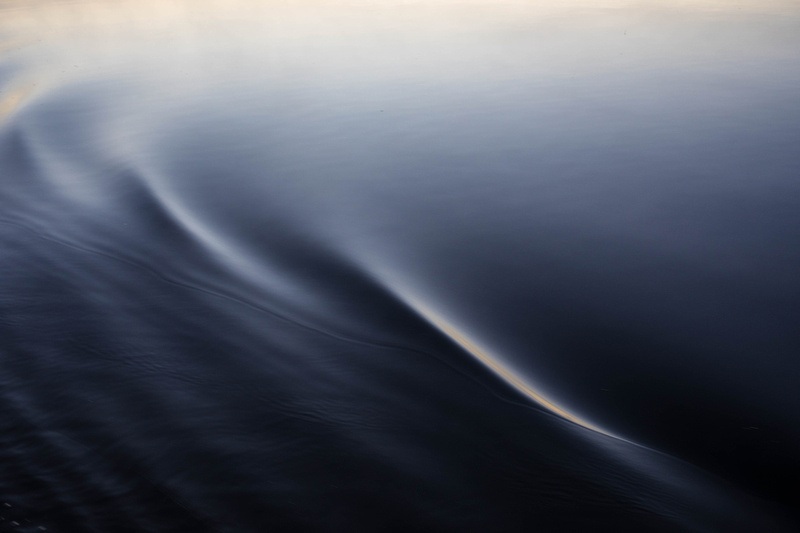 161003_5D4_0667.jpg
161003_5D4_0667.jpg
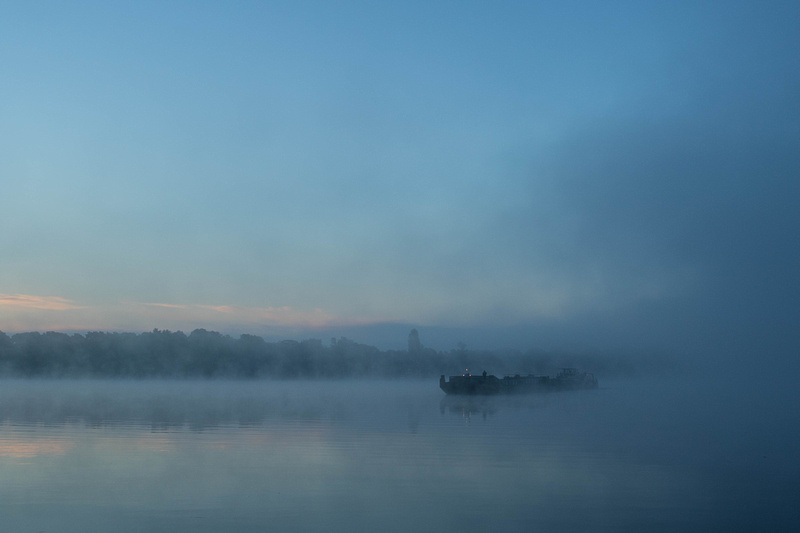 161003_7D2_0204.jpg
161003_7D2_0204.jpg


Many of my HDR-Panorama shots I took with the IS-Lens in portrait mode... guess the resolution...
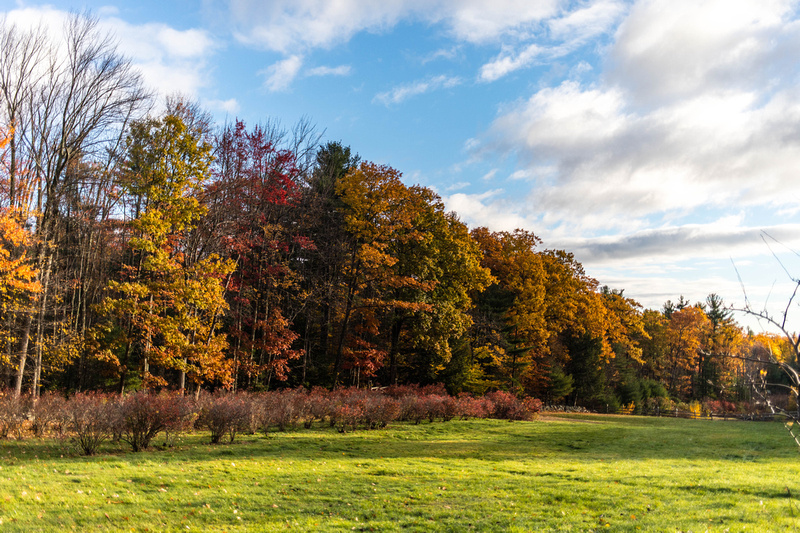 161104_5D4_0081.jpg
161104_5D4_0081.jpg
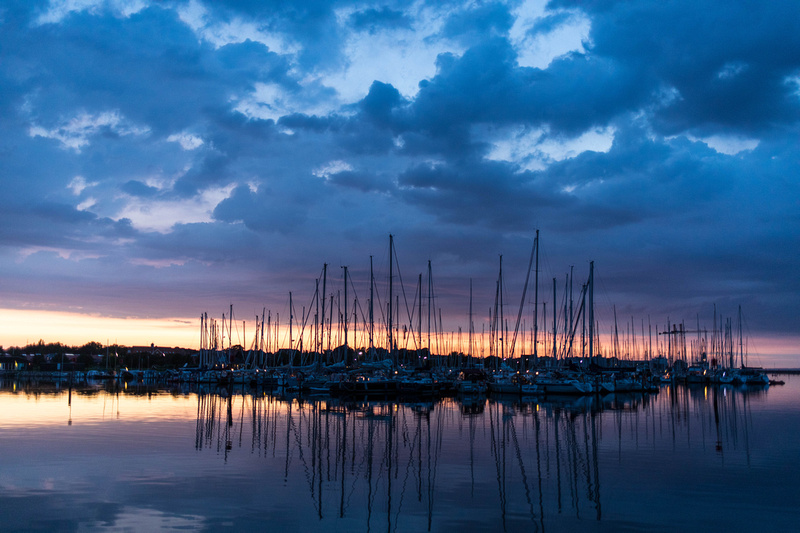 170802_5D4_1172.jpg
170802_5D4_1172.jpg
The last photo was taken on my trip with the Milvus..m The IS definitely helps....
Highlights of the Canon EF 35mm f1.4 L II USM
This lens I bought together with the EOS M5. It immediately became one of my favorite lenses - especially in combination with the M5.
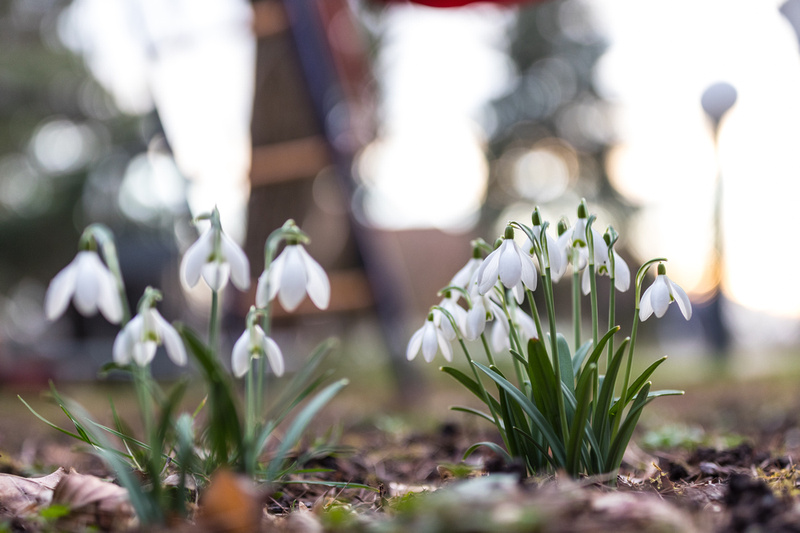 170317_M5_0027.jpg
170317_M5_0027.jpg
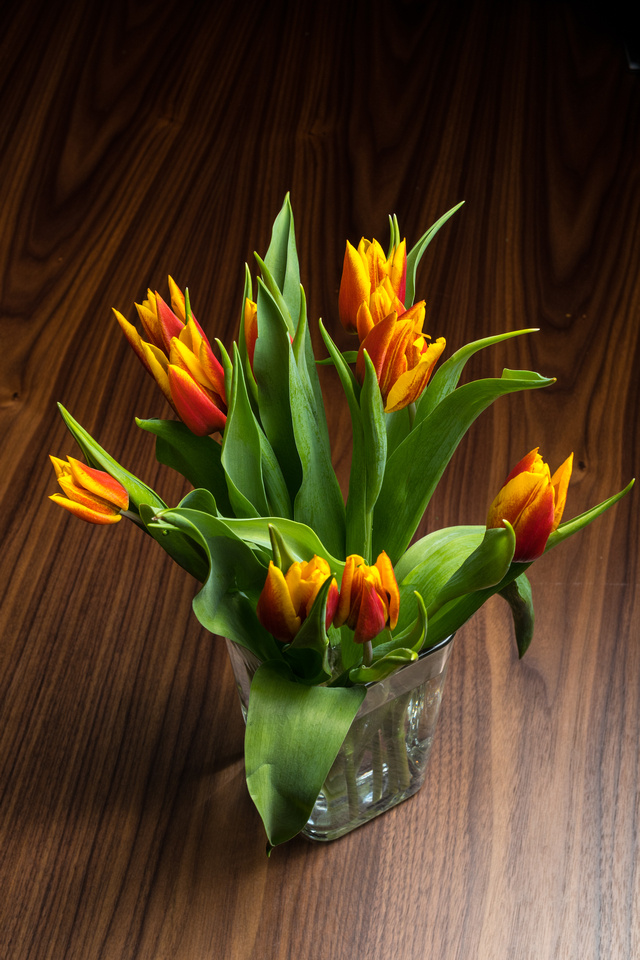 170317_M5_0067.jpg
170317_M5_0067.jpg
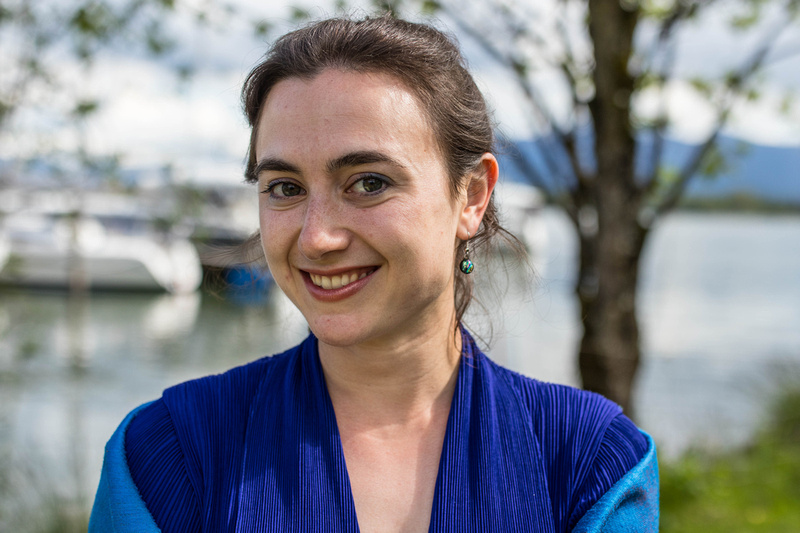 170514_M5_0025.jpg
170514_M5_0025.jpg
Shooting portraits is really fun, especially with the EOS M5...
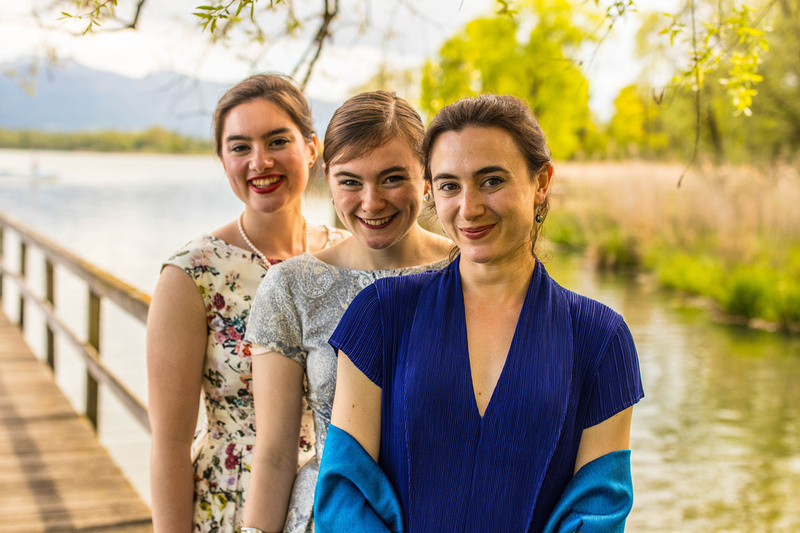 170514_M5_0034.jpg
170514_M5_0034.jpg
This image shows that the lens works wide open even with small groups....
 170715_M5_0079.jpg
170715_M5_0079.jpg
 170715_M5_0085.jpg
170715_M5_0085.jpg
Please look at the bokeh!!!
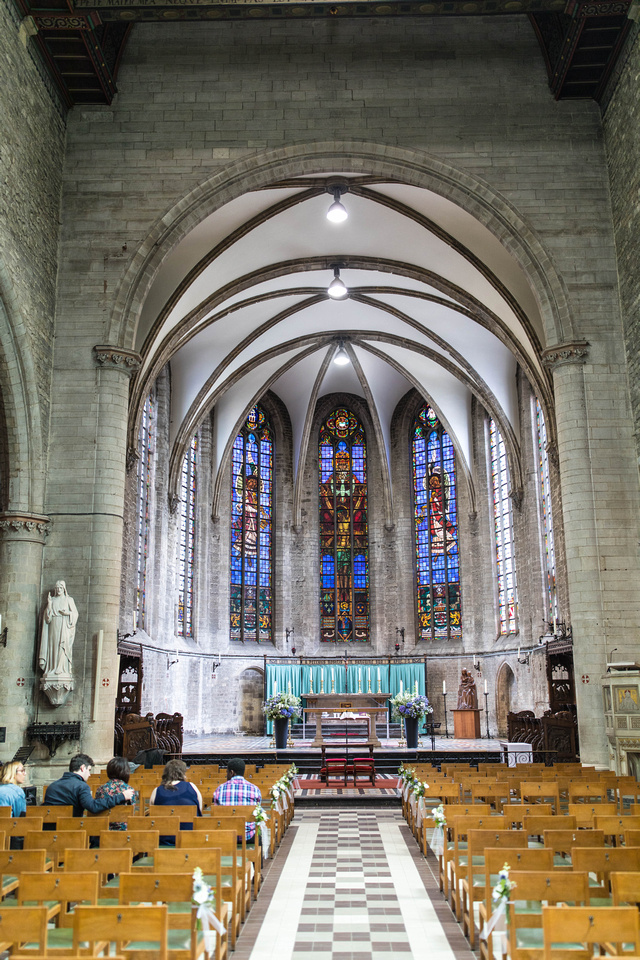 170717_5D4_0027.jpg
170717_5D4_0027.jpg
For me this photo is so crisp - even inside a church handheld.......
 170717_M5_0148.jpg
170717_M5_0148.jpg
This photo is special - because it shows limitations of manual focus lenses. If you ask why: there is a reason: look at the bubbles, they are a bit special... to let the bubbles pop you need a huge ring flash - in this case it is the original roundflash. But to focus manually is nearly impossible- it is too tight...
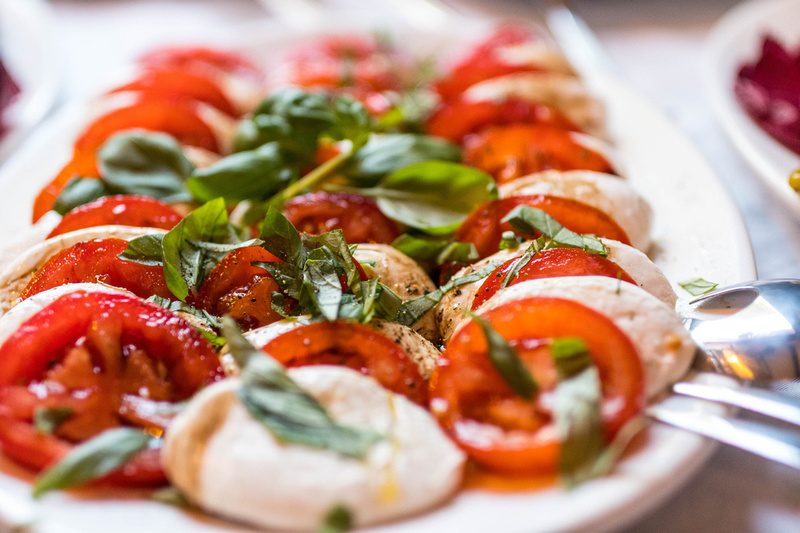 170722_M5_0117.jpg
170722_M5_0117.jpg
 170802_5D4_1063.jpg
170802_5D4_1063.jpg
This looks like bad weather...
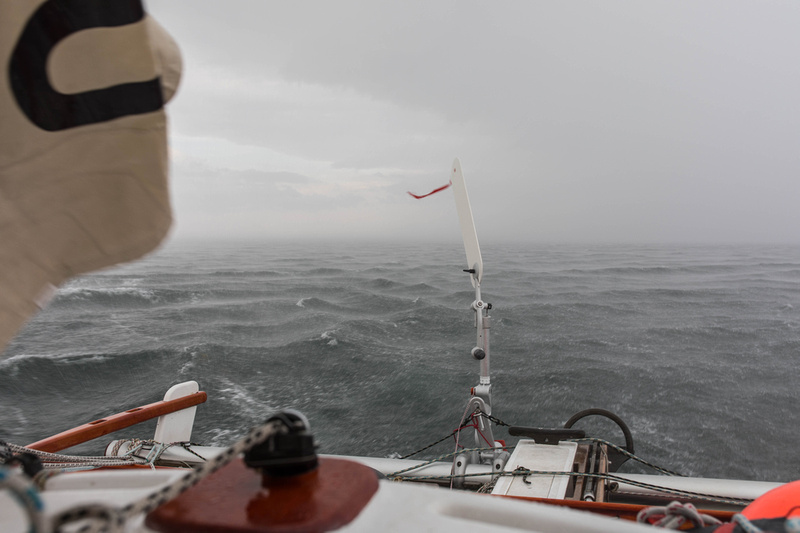 170802_5D4_1069.jpg
170802_5D4_1069.jpg
And this is bad weather: 35 knots wind and rain. And yes the weather proof gear is weather proof. confirmed....
 170802_5D4_1033.jpg
170802_5D4_1033.jpg
But luckily that lasts only a couple of minutes....
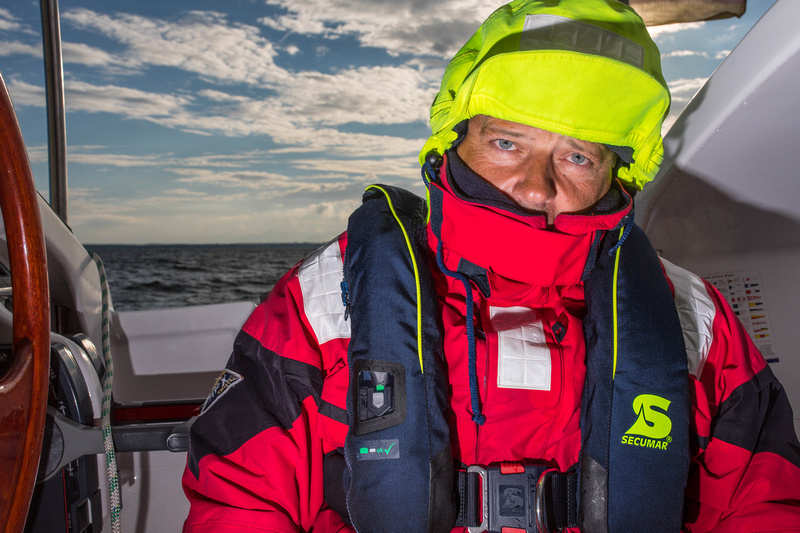 170802_5D4_1079.jpg
170802_5D4_1079.jpg
I do love this image. Shot with the flash again off camera....
Highlights from the Milvus f1.4/35mm
Unfortunately I had this wonderful lens for only 2 weeks for testing. But in these 2 weeks I dis a couple of remarkable images which I want to share with you here:
 170802_5D4_0783.jpg
170802_5D4_0783.jpg
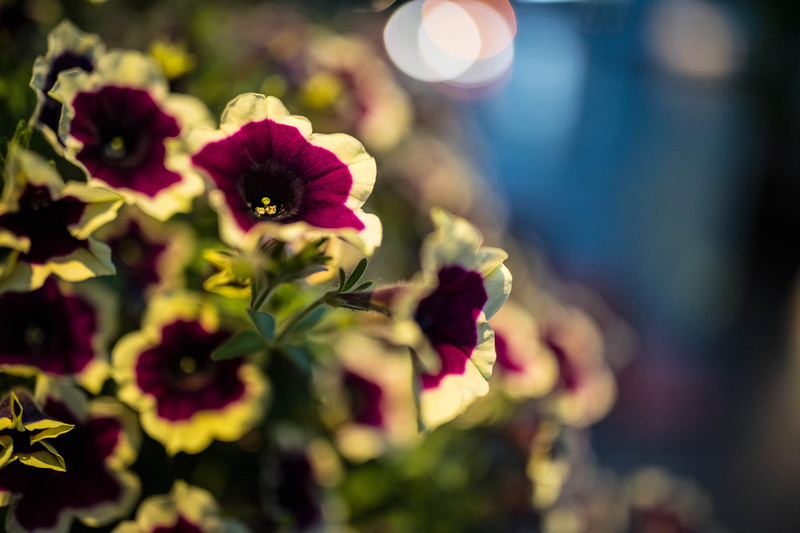 170802_5D4_0848.jpg
170802_5D4_0848.jpg
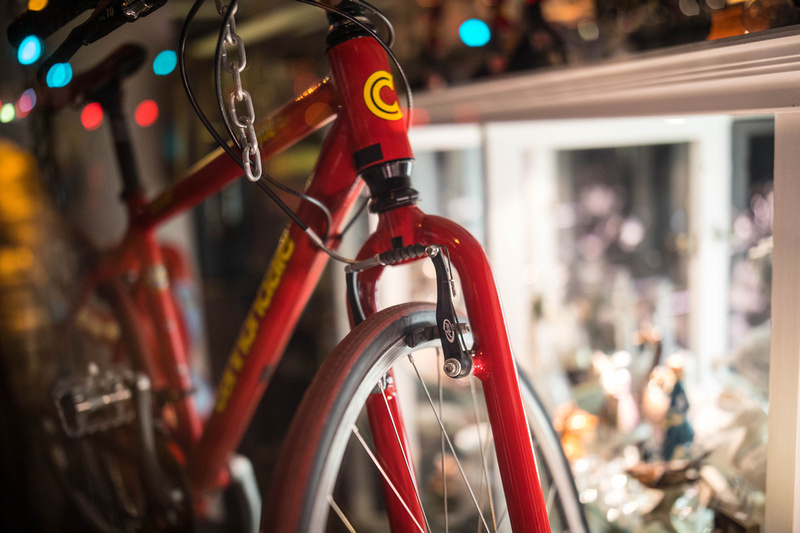 170802_5D4_0873.jpg
170802_5D4_0873.jpg
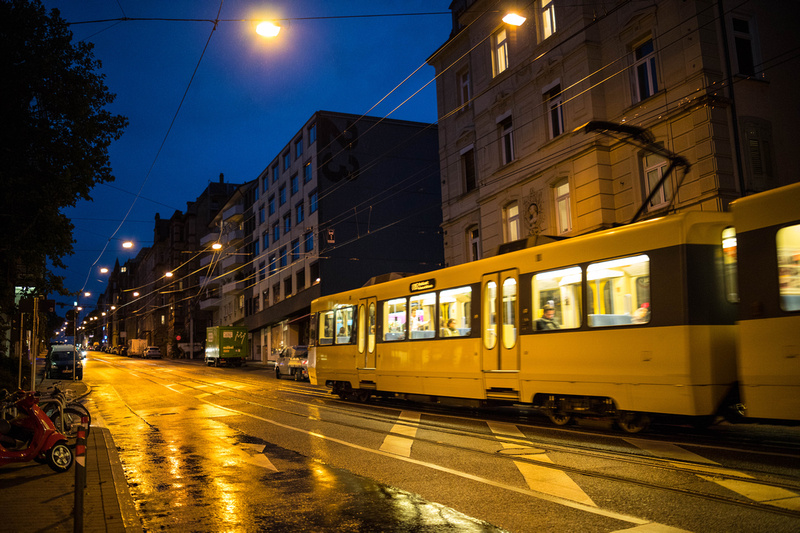 170802_5D4_0889.jpg
170802_5D4_0889.jpg
 170802_5D4_0897.jpg
170802_5D4_0897.jpg
These photos I shot on a way to a dinner with a customer... with the 5DMkiV. These kind of image are around us every day...
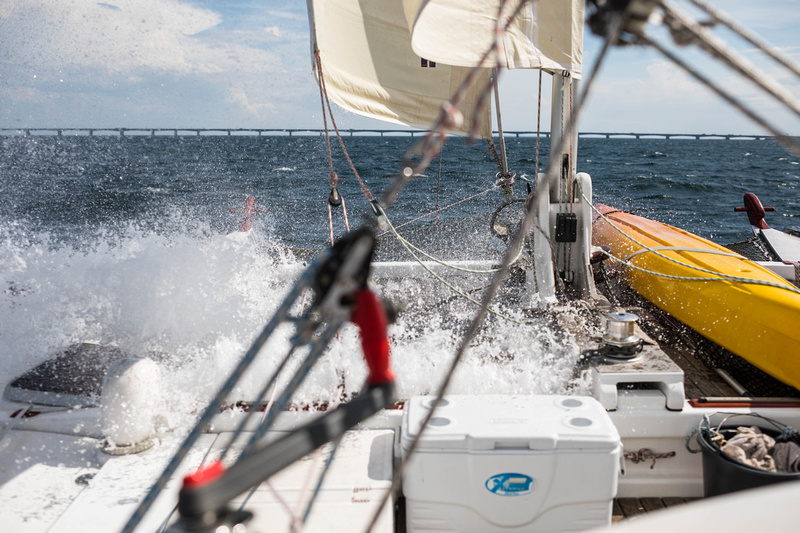 170802_5D4_1003.jpg
170802_5D4_1003.jpg
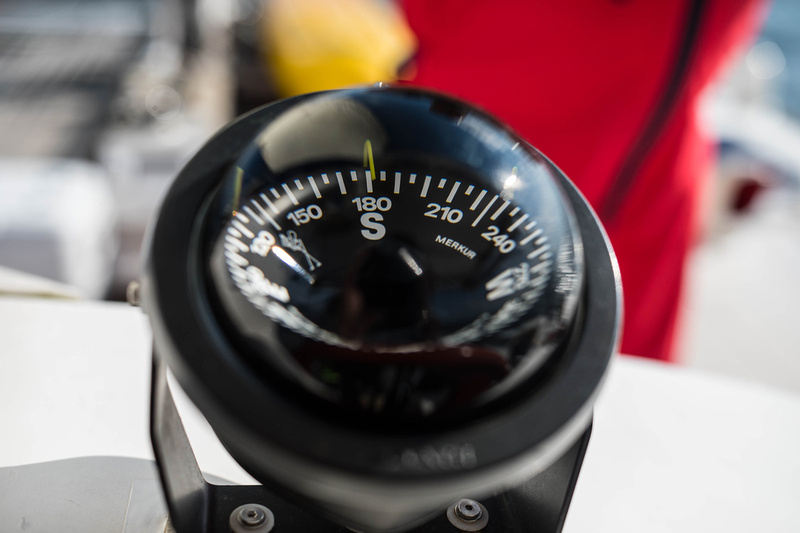 170802_5D4_1024.jpg
170802_5D4_1024.jpg
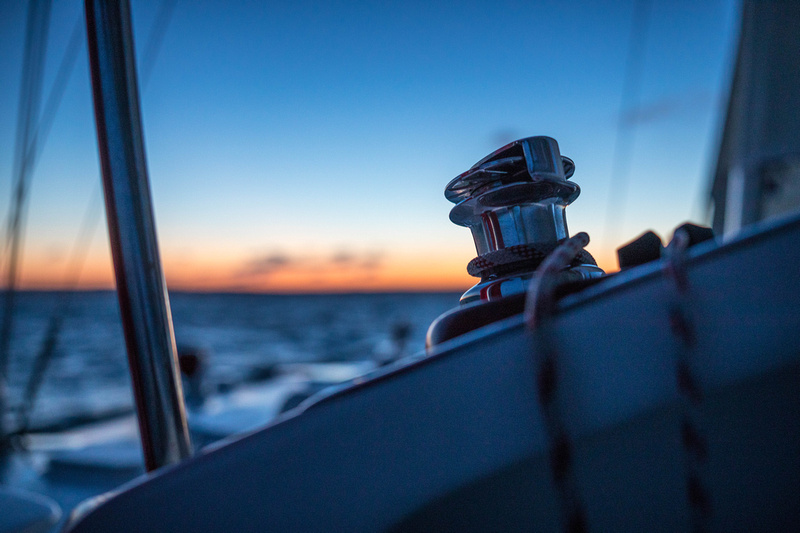 170802_5D4_1115.jpg
170802_5D4_1115.jpg
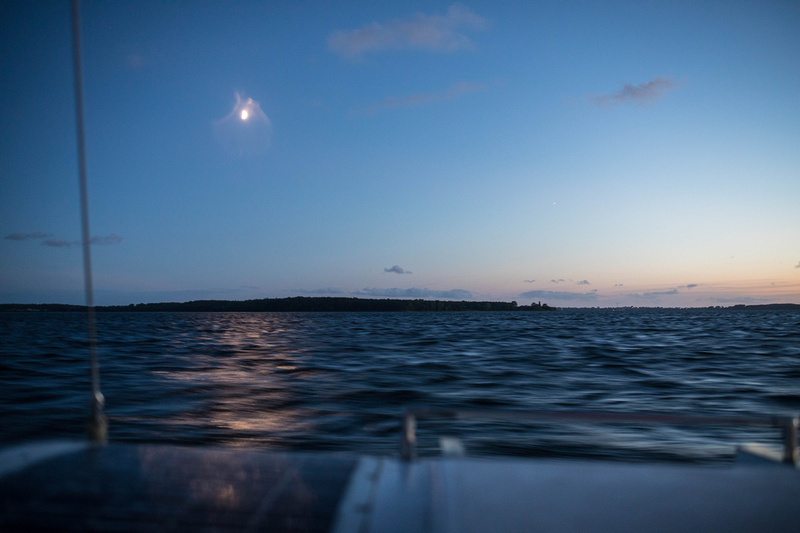 170802_5D4_1116.jpg
170802_5D4_1116.jpg
Images from the boat trip, as well with the 5D MkIV
 170802_M5_0465.jpg
170802_M5_0465.jpg
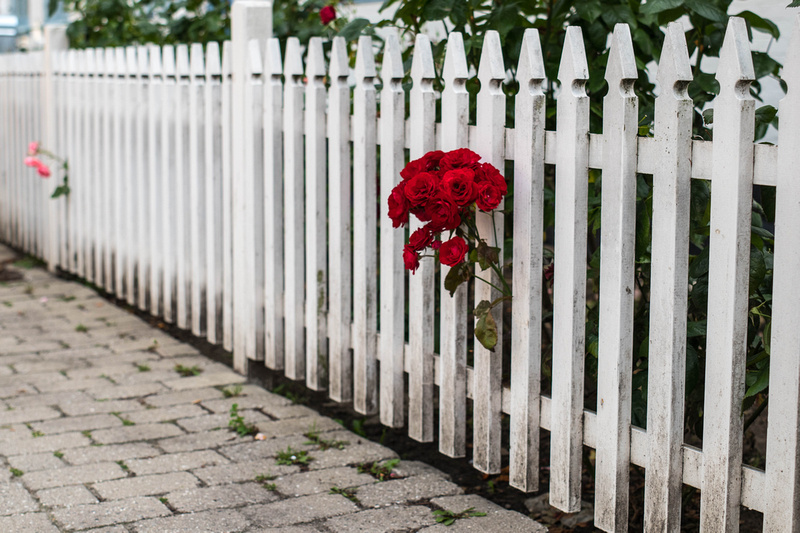 170802_M5_0470.jpg
170802_M5_0470.jpg
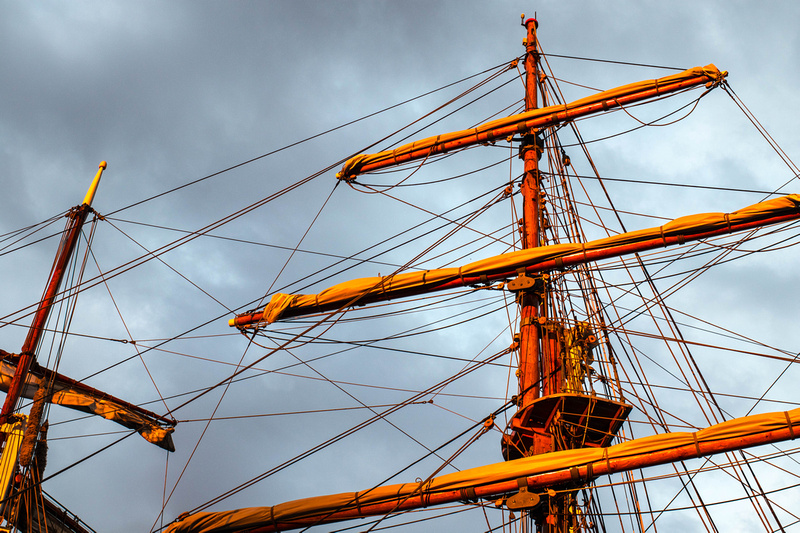 170802_M5_0498.jpg
170802_M5_0498.jpg
 170802_M5_0507.jpg
170802_M5_0507.jpg
These photos were taken on a trip though the village of Marstal in Denmark
 170802_M5_0512.jpg
170802_M5_0512.jpg
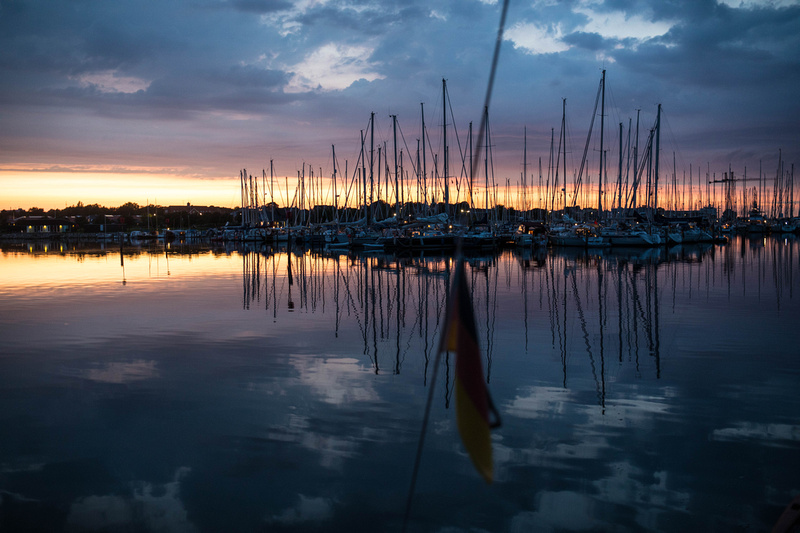 170802_5D4_1176.jpg
170802_5D4_1176.jpg
And the last 2 image were shot on the boat....
 170804_M5_0004.jpg
170804_M5_0004.jpg
 170804_M5_0009.jpg
170804_M5_0009.jpg
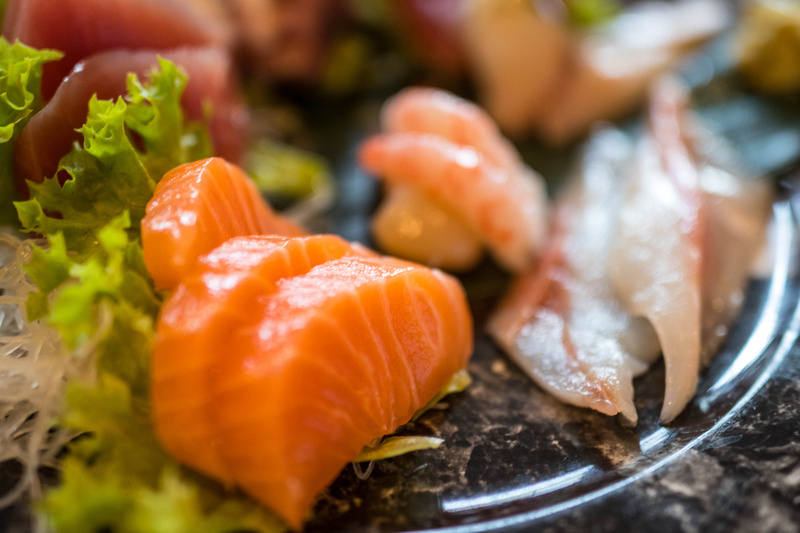 170804_M5_0012.jpg
170804_M5_0012.jpg
The Sushi photos I took at Hiro-Sushi in Stuttgart. These series were taken with the EOM M5.
Special Remarks
Owning 3 other Milvus lenses I feel pretty familiar with manual focusing. But I have to say the Milvus 1.4/35mm was a bit more difficult to handle than the other ones - or I used it differently, more experienced maybe. The difficulty I had was with extreme focusing points in the 5D Mk IV where I did not had consistent results and a couple of not well focused images. It is very interesting that using manual focusing lenses is much easier on mirrorless cameras than on classical DSLR´s. But here I faced difficulties in low light as well because the images became bit noisy and harder to judge.
Another interesting experience is using the modern Canon cameras in live view on the iPad. That´s awesome. It works just great. It is pretty was to connect to iOS and the control of the camera is great. And I used the same method to transfer images during these 2 weeks I had the Milvus for publishing images on social media. It is so fast and easy....
Verdict
Hopefully this review inspires you to look at the prime lenses a bit more interested, or buy one and have fun with them.
Definitely the value for money lens is the f2.0 IS. It is sharp, has controlled amount of color fringing and offers a proper bokeh rendering and contrast. The corners are softer wide open... But still absolutely useable. So it is highly recommended: value for money....
As said earlier: the L-f1.4-II is a lens I love. It is just great and delivers. and the Autofocus helps especially in situations where you have to be quick - or no other choice.
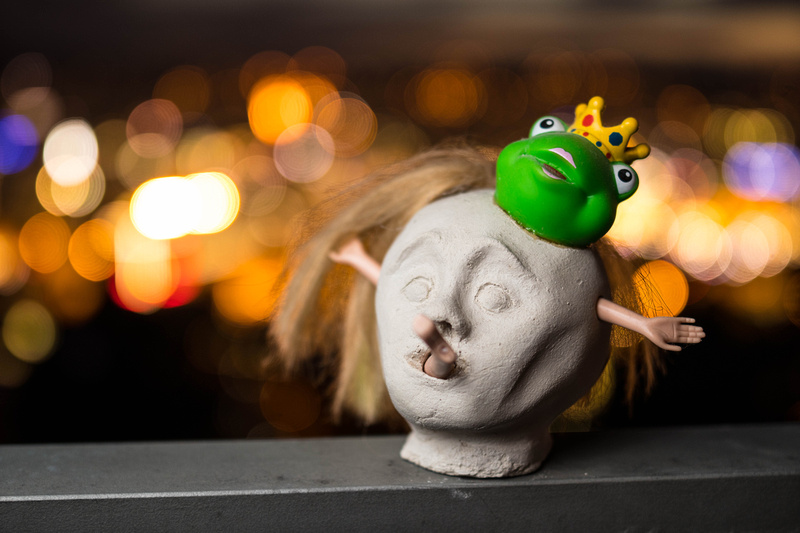 170804_M5_0029.jpg
170804_M5_0029.jpg
The Milvus: If i would not have bought the L before it would be a very hard decision now: the rendering of the lens is just awesome. Images you even do not want to touch at all. The technical aspects are outstanding as well. Who ever likes manual focus and who ever needs the ruggedness: the Milvus should be yours. The feeling of working with a precision instrument: no other lens has it.
For me this last series of photos had convinced me about the Milvus: It delivers. Vividness and fun.
Let me make one remark: On Mirrorless like the M5 shooting manual is an awesome fun... Much more than on a DSLR.
Miscelleanous
First of all: Big thanks to Zeiss giving me the Milvus for a 2 weeks test. It was a lot of fun to use this lens and to compare it with the Canon ones. For me it is the most interesting lens - and maybe the lens which gives you differentiation to other Professionals.
The photos shown were taken with the Canon EOS M5 and the 5DM kIV. For the photos of the lenses I used the Zeiss Milvus f1.4/50mm.
As usual:



































































